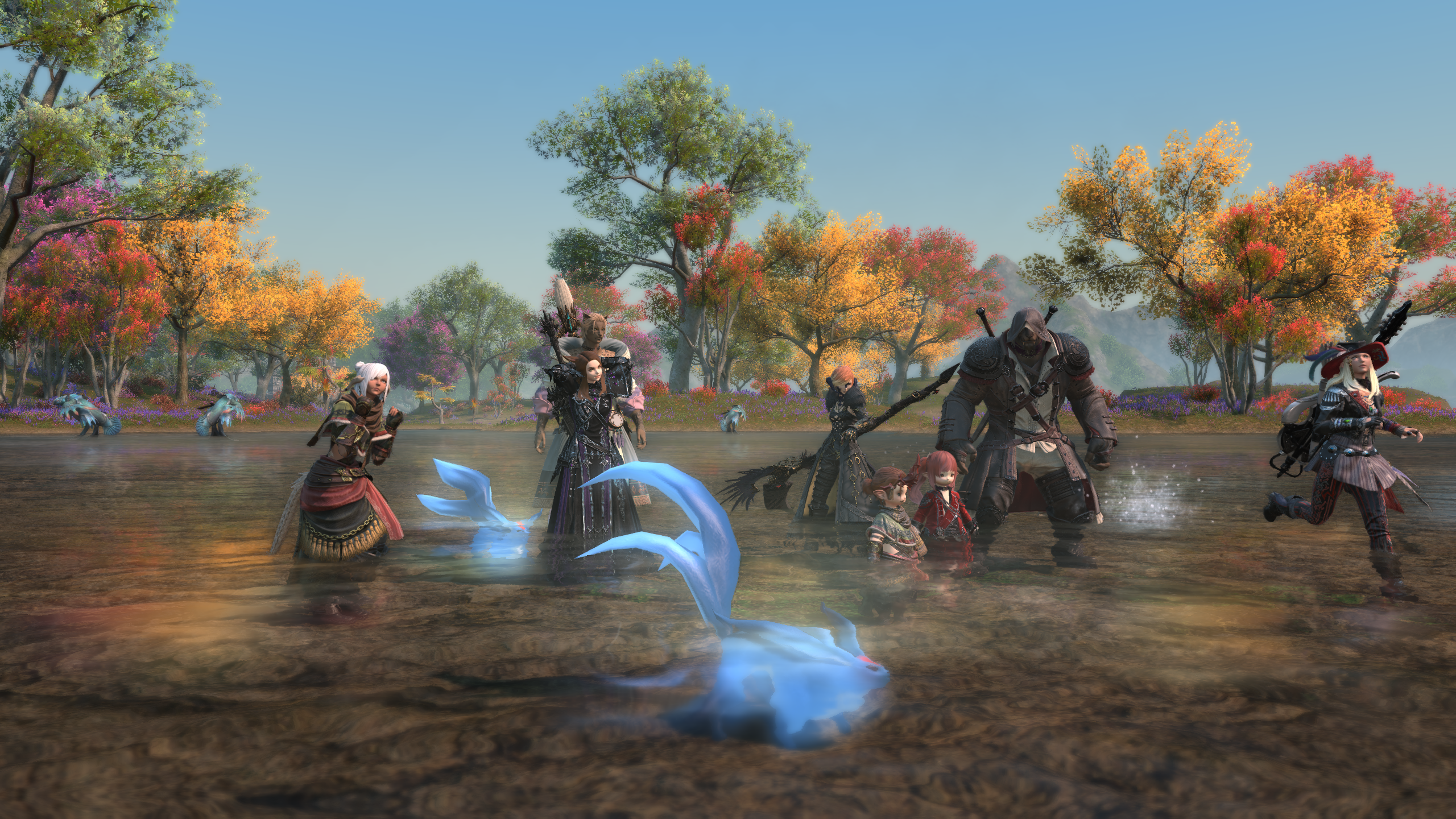
Final Fantasy 14: Dawntrail is just a few weeks away and Warriors of Light across the globe are eager to explore an entirely new frontier of a fantastical world that many like to call their second home. For those who are up to date with Final Fantasy 14’s story, the Dawntrail expansion represents a new beginning for the massively multiplayer online role-playing game (MMORPG); bright horizons of a fresh saga after the often heart wrenching gloom of Shadowbringers and Endwalker.
I recently attended the European leg of Dawntrail’s media tour, and had the chance to explore a handful of the expansion’s new zones as well as the Viper and Pictomancer jobs being added to the game. While these areas were certainly much more grounded than many of the high fantasy locales of expansions’ past, I’m happy to report that the sense of scale, awe, and wonder remains as strong as ever.
Before we begin, however, I must stress that the version I played was based on a pre-release build of the Dawntrail expansion. That means everything from world design to job action potency is subject to change in the run-up to its full release on July 2 (or June 28 if you’ve pre-ordered for early access).
Our new home
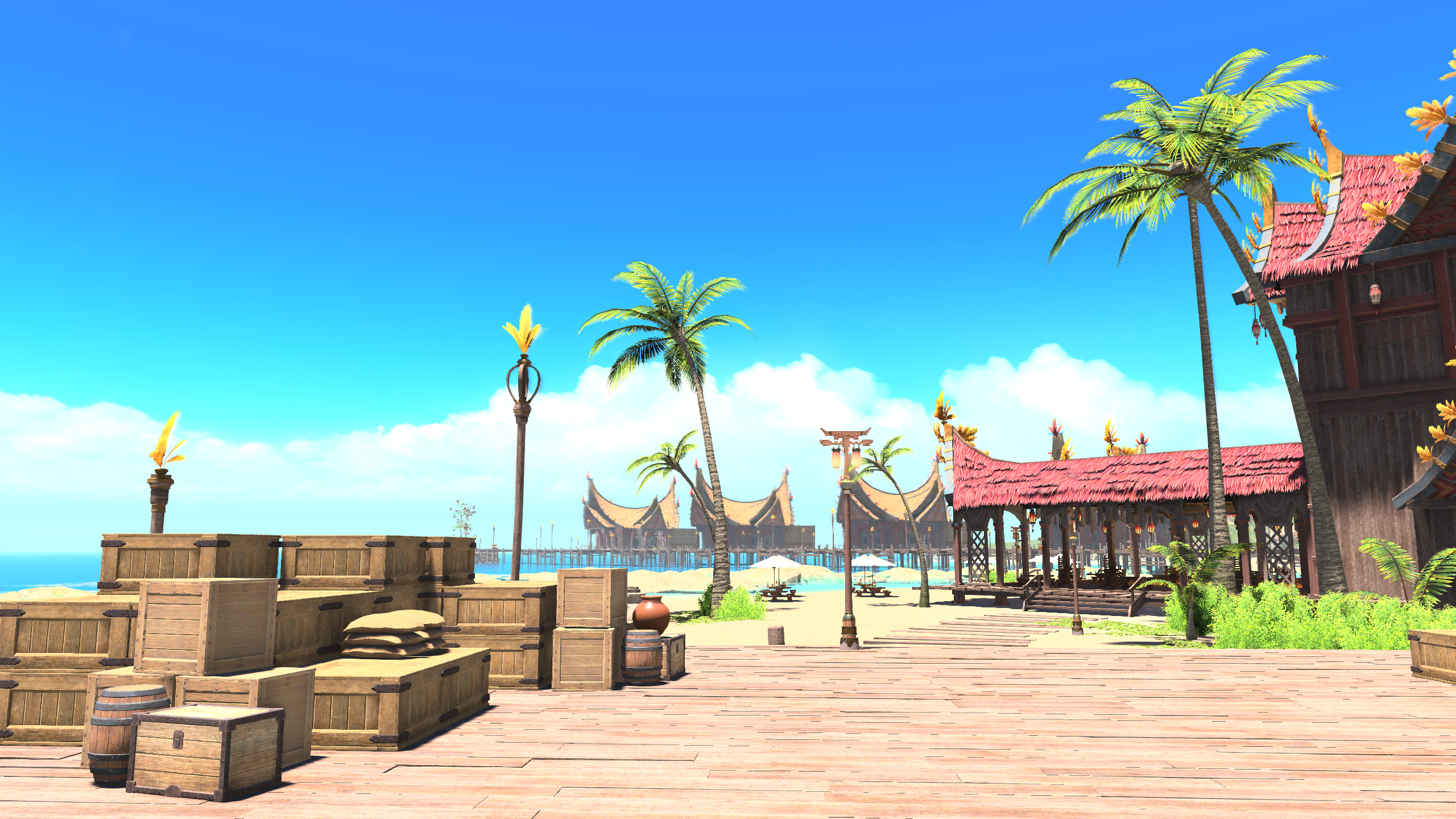
My journey began in Tural’s capital of Tuliyollal, one of the new hub cities featured in Dawntrail. The South American-inspired locale is teeming with details both big and small. Makeshift shop stalls line winding streets and alleyways, separating a wide open harbor from the residential areas and gardens above.
Tuliyollal has a distinctly different vibe from the cold, scholarly stones of Old Sharlayan and the (quite literally) otherworldly nature of The Crystarium. Instead, the new hub city feels delightfully down to earth. The map design here is pleasantly robust, which I imagine Creative Studio 3 took into account when building Tuliyollal in line with the utterly gorgeous graphics update. But more on that later.
I’d be remiss to not mention Tuliyollal’s music, which is delightfully funky during the day and carries a smooth, steady rhythm at night. I love it, and it’s already seeming like composer Masayoshi Soken and the sound team are onto another sterling score with this latest expansion.
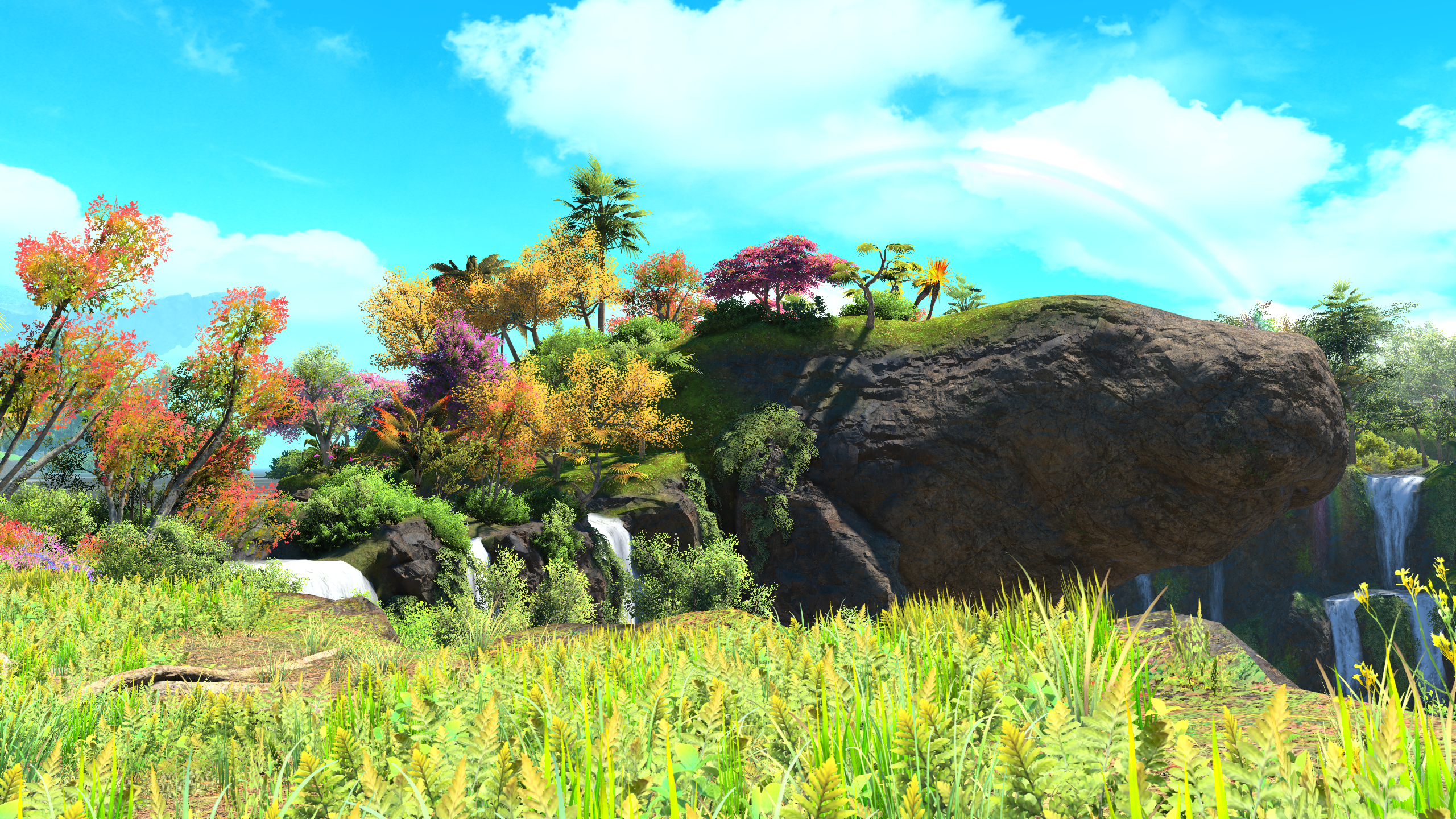
Beyond Tuliyollal, I got to explore two of Dawntrail’s open zones. The first was Kozama’uka, an absolutely breathtaking area populated by dense forests and towering jagged cliff sides from which countless waterfalls flow. At first glance, it’s not dissimilar to Endwalker’s Thavnair, but what really sold me on Kozama’uka was its sharply vibrant color palette. You’ll run into flora ranging across the whole color spectrum, and if you’re using a bright HDR-capable display, this could likely be one of your new favorite locations for taking screenshots in.
Get daily insight, inspiration and deals in your inbox
Sign up for breaking news, reviews, opinion, top tech deals, and more.
The second of the two zones I visited was Urqopacha, a mountainous location with a more seemingly temperate climate. This area feels much more inhabited, in no small part thanks to the many specks of civilization dotted throughout the region. While I found Urqopacha to be not quite as visually striking as Kozama’uka, this is more than made up for in the sheer amount of detail throughout the zone. There are loads of charming rustic buildings and plenty of foliage and environmental objects that all lend a distinctly lived-in vibe. It reminded me a touch of Stormblood’s Azim Steppe, albeit far less flat and vastly more visually interesting.
Beyond these overworld areas, I was also able to check out Dawntrail’s first dungeon, though I’ll have a full overview of this in a separate preview as there’s a ton to go over. For now, just know that it’s a very strong opening dungeon that packs plenty of twists and some genuinely surprising boss mechanics.
Snake? Snake!
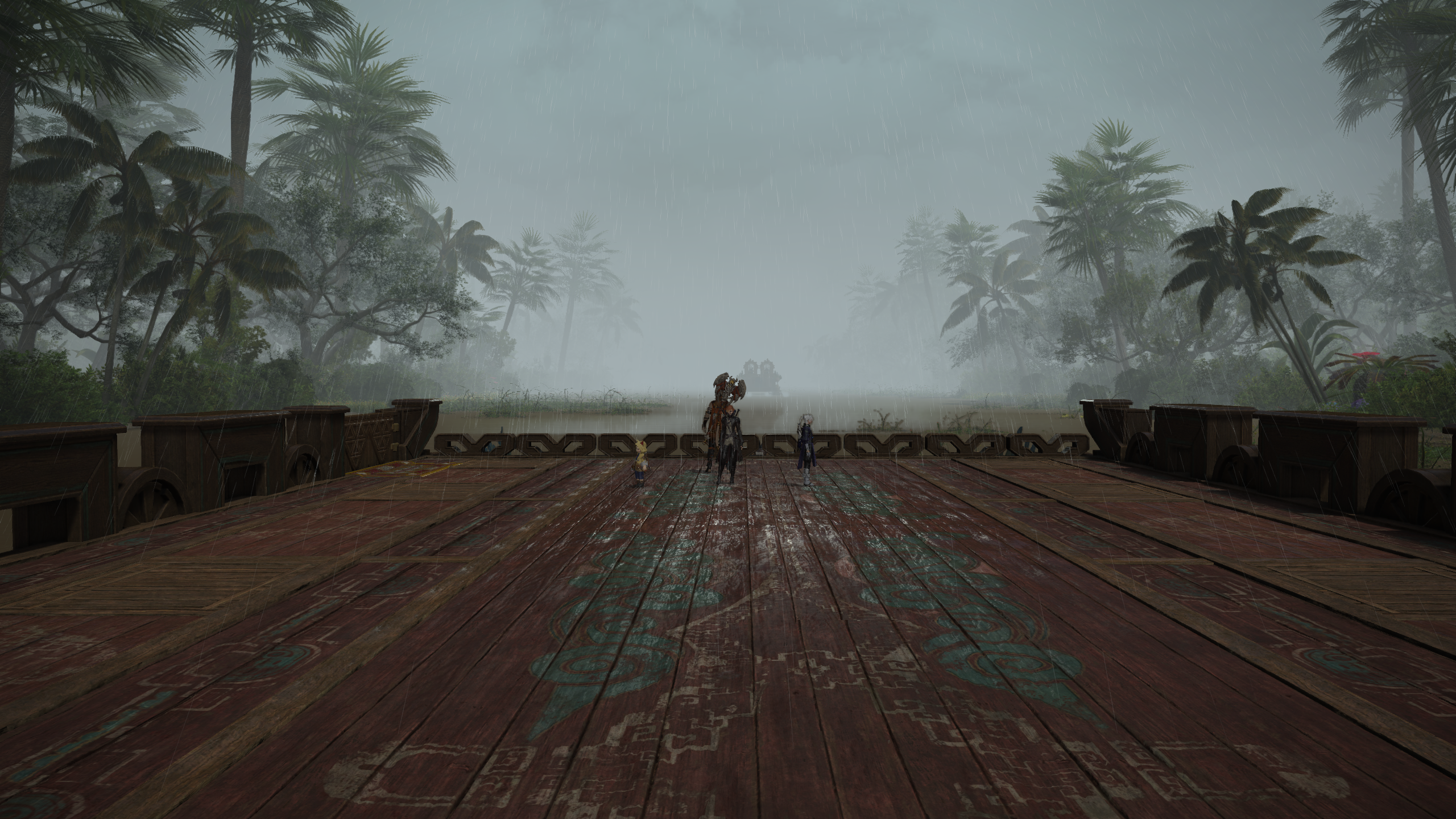
Another highlight of my time with Dawntrail was a chance to try out the expansion's new jobs (read: classes) - Viper and Pictomancer. Starting with Viper - the sixth melee DPS job in Final Fantasy 14 - if you found Endwalker’s Reaper to be a bit on the simple side, then I’ve got good news. Viper certainly has a higher learning curve, but not so much that it feels unwieldy.
Viper has the usual three-step standard combo we’ve come to expect from most DPS jobs, but the new vocation makes things more interesting. Its combo system is more robust, leading to one of four (yes, four) combo finishers based on what your previous two inputs were. This is plenty stylish, but there’s a method to it, too.
You’ll want to cycle through each combo finisher in order to keep your personal buffs and enemy debuffs active. There are three you’ll want to keep up at all times. Noxious Gnash increases the damage dealt to a target. Hunter’s Instinct boosts your own personal damage dealt. Finally, Swiftscaled increases your attack speed. It might sound a bit much, but thankfully, your hotbar will highlight abilities that you’ve yet to use as part of your overall rotation, making that side of the flowchart very easy to manage.
Beyond this, you’ll also work on building up your Serpent’s Ire gauge. This will naturally build up as you perform abilities, enabling you to access an incredibly powerful and fast-hitting combo string for massive damage, not unlike Reaper’s Lemure Shroud state. You’ll want to use this combo as soon as it’s ready and, preferably, when all your buffs are primed.
I’m more of a caster in Final Fantasy 14, but I ended up really enjoying Viper and the flow of its rotation. At max level, you’ll be doing a lot of double and even triple-weaving off-global-cooldown skills between your main combos, making the job feel fast and energetic. Given the very quick nature of its button presses, however, you’ll likely want decently low ping in order to avoid clipping skills, especially during high-end content.
A picture paints a thousand spells
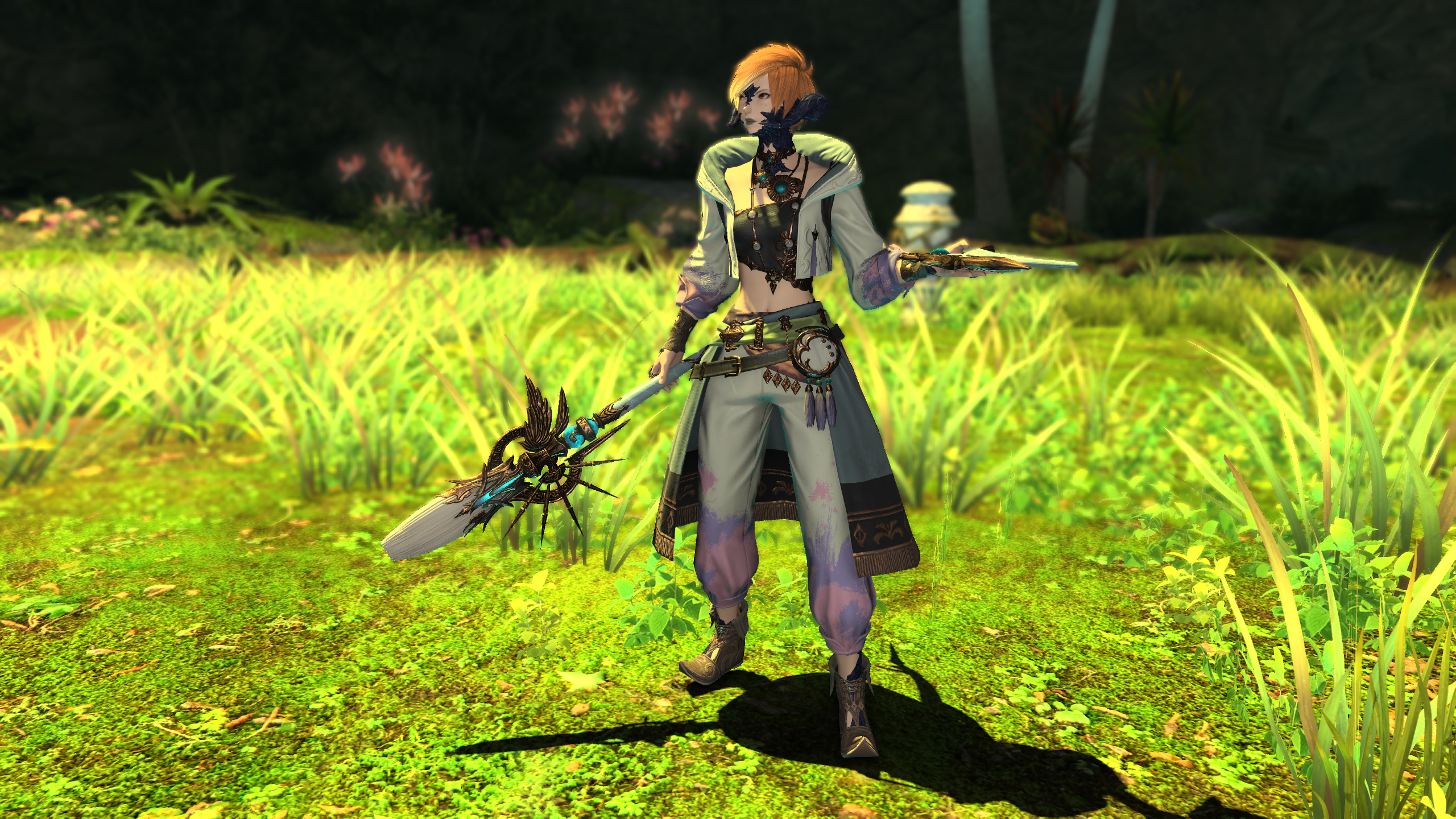
Onto Pictomancer, then, and I found in it a caster DPS that was vastly unlike Black Mage, Red Mage, and Summoner. Like Viper, Pictomancer will take some getting used to thanks to its relatively unorthodox flowchart.
Pictomancer’s basic abilities take the form of Aetherhue actions. Think of these as your simple fire, water, thunder spells, and so on. Casting these in sequence will build up the job’s Palette gauge, which can then be spent on more powerful spells.
On top of this, Pictomancer is able to create Motifs, divided into Creature, Weapon, and Landscape categories. These are assigned to the job’s bespoke canvas heads-up display, making them easy to keep track of.
You’ll need these motifs assigned to your canvases in order to access the job’s most potent abilities. For example, the Weapon Motif, when cast, is then replaced with the Hammer Motif that provides a hard-hitting spell combo. Meanwhile, casting the Landscape Motif changes it to the Starry Sky Motif. This in turn will create a colorful area of effect around the player, reducing their recast time for those aforementioned Aetherhue spells.
While extremely fun to mess around with, and packing some delightfully vibrant spell effects, Pictomancer was definitely the trickier of the two jobs to get to grips with. However, director and producer Naoki Yoshida also seems to be a huge fan of the job. In my brief interview with him at the media tour, he said: “I’ve liked playing Pictomancer so much that I’m considering playing it together with Black Mage as my main jobs. It would be interesting to use Pictomancer in various types of content, and you’ll be able to realize how well-balanced it is. I would encourage players to try it out.”
Take it all in
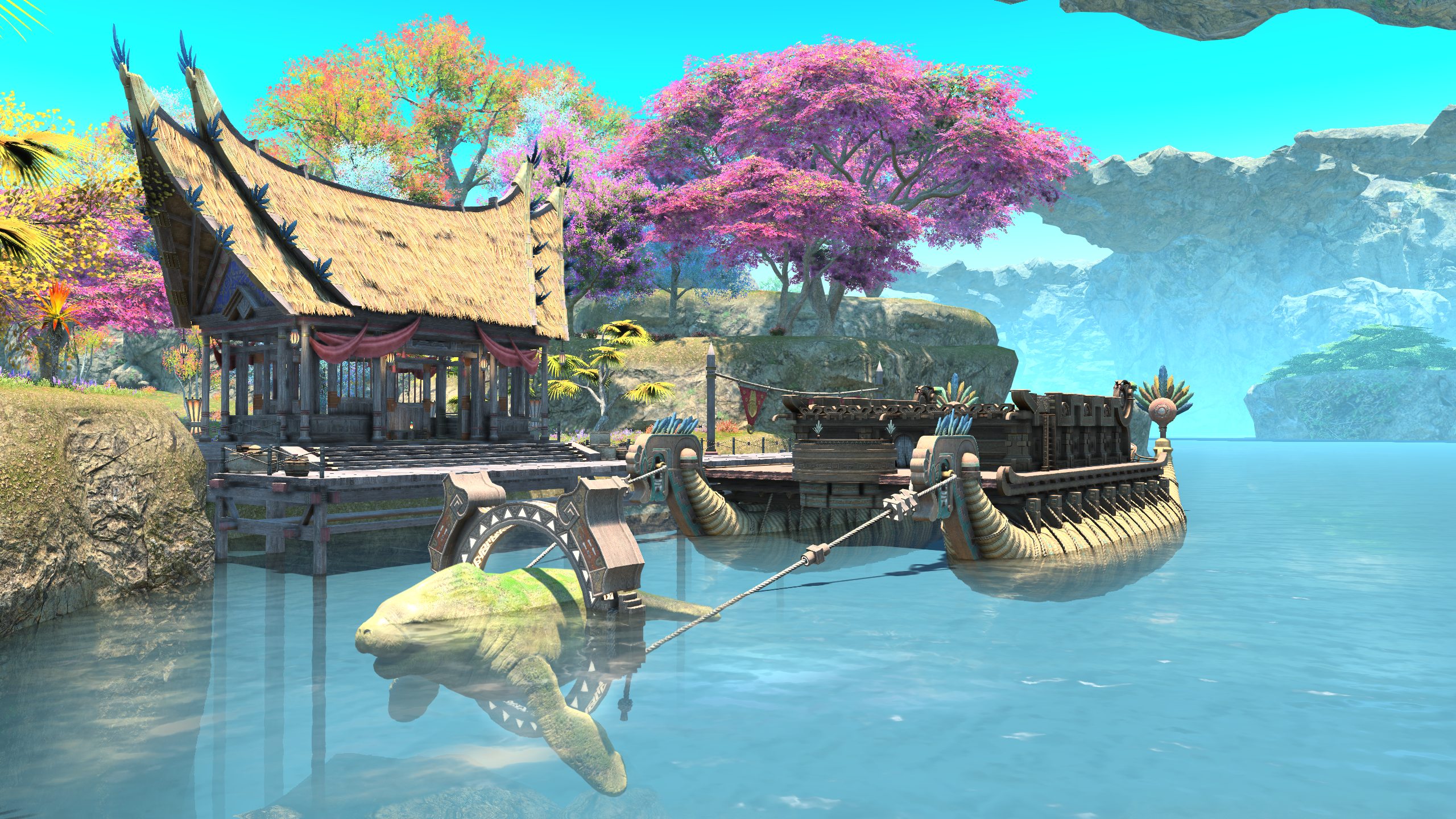
Finally, it’s worth mentioning the first graphical update coming to Final Fantasy 14 with the Dawntrail expansion. The update was present in the media tour build, and, admittedly, it felt a tad surreal playing the decade-old MMORPG with such a dramatic upgrade to its visual presentation.
Now, you shouldn’t expect the game to look drastically different; you’ll still recognize it as the MMORPG you know and love. However, I can’t stress enough just how beautiful the game looks in motion now - far more than any screenshot or even the recently updated benchmark can demonstrate.
The lighting is exceptionally noteworthy here, adding so much depth to the scene. High-quality shadows are accurately cast off buildings, objects, and characters. The improvement is especially apparent in busier or more complex locales, like Tuliyollal, where the varied sizes of streets and alleyways allow the lighting to react to the environment in myriad ways.
It’s really quite fitting that the visual update was saved for Dawntrail, specifically. It’s our first foray into the New World and with it an entirely new saga. Seeing Final Fantasy 14 have such a striking visual glow-up here makes the entire game feel like it’s meaningfully evolving in more than just story and content, and it’ll certainly go a long way to future-proof the game for years to come.
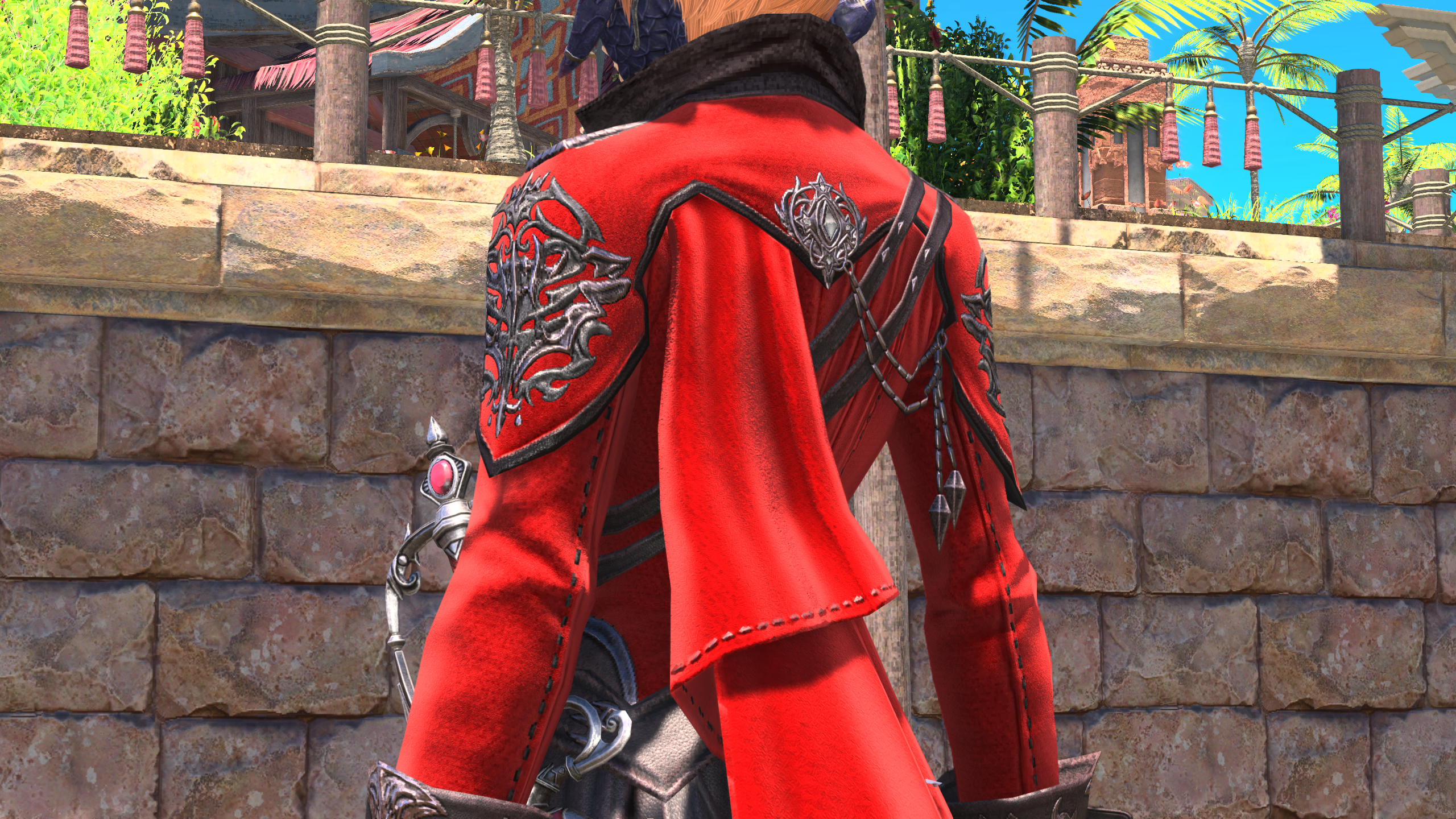
Of course, it’s not just lighting that’s received a touch-up. Texture detail has also seen a significant boost. Clothing and armor now bear more realistic-looking material. For example, the artifact gear for Red Mage (which you can see in the above image) looks to have a soft-felt texture, especially noticeable when viewed up close. Meanwhile, metallic armor and weapons have a polished sheen to them. This upgrade, in tandem with the new two-channel dye system, is going to help your Warrior of Light’s Glamour game be all the more, well, glamorous.
Overall, my early impressions of the Dawntrail expansion are glowing, and we were only able to scratch the surface of what’ll be on offer in the full release. While the demonstration was limited to exploring a handful of zones and fighting creatures in the world, the new jobs and the visual overhaul strongly hint at Dawntrail being a very special expansion and a potentially monumental evolution for the game as a whole.
You might also like...

Rhys is TRG's Hardware Editor, and has been part of the TechRadar team for more than two years. Particularly passionate about high-quality third-party controllers and headsets, as well as the latest and greatest in fight sticks and VR, Rhys strives to provide easy-to-read, informative coverage on gaming hardware of all kinds. As for the games themselves, Rhys is especially keen on fighting and racing games, as well as soulslikes and RPGs.